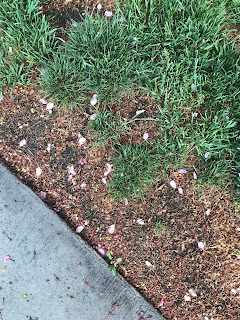Optional task:
Sometime this weekend, listen to this really cool RadioLab podcast on color. It talks about Isaac Newton and shares really fascinating facts and insights into how and why we see color. If you don't listen to the whole thing, consider listening to just the first part- until you learn about the mantis shrimp. If you do listen to it, send me a message with your reaction. I'd love to know what stood out to you!
___________________________________Yay! It's May!
Celebrate the new month by getting outside for a nature journal.
(The nature journal is NOT optional. 😀)
For the past several weeks I’ve asked you to go outside and notice different things- senses, shapes, colors, what’s up and what’s down.
Today I want you to think back on some of the things you’ve noticed on your earlier nature journals and look for how nature has CHANGED over the last few weeks.
Set a timer for at least 15 minutes and then look around- What’s the same? What’s different? You may use words and/or pictures.
If you don’t notice changes or don’t remember, you can just draw and/or describe anything in nature that stands out to you.
You can print this note-catcher or make your own.
Please send a picture of yourself outside and a picture of your nature journal to Ms. Dolan; adolan@hccs481.org ms.dolans_science







